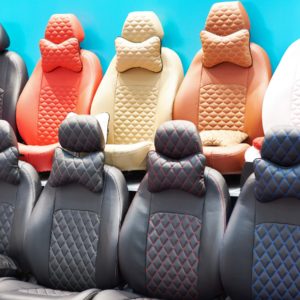Car covers are a useful accessory to protect your vehicle from the elements. In the summer, car covers can shield the paint from harmful UV rays which can cause paint to fade, crack, and peel. During spring and fall, car covers can offer a layer that prevents leaves, tree sap, and other debris from settling on the paint.
Are there any benefits to putting a car cover on a vehicle during winter? Should I use car covers in the winter? Is there a car cover type that offers the best protection during winter? Let’s discuss.
The Benefits of Car Covers in Winter
Easier to Remove Ice
Winter can cause ice and snow to accumulate on your vehicle. You need to remove ice from your windshield, mirrors, and door glass before you depart so you can have a clear view of your surroundings.
You can use an ice scraper or your vehicle’s defrost function to do this. However, these will require time or effort. Using a car cover will prevent ice from lodging itself onto your vehicle’s surface. You can get ready to leave in just one swift motion of removing the cover and all the ice on it.
Prevents Accidental Damage During Ice Scraping
Ice scrapers are made with soft materials designed to not scratch windshields. However, scraping ice off windshields still causes glass chips and scratches if the ice is thick or if you exert excessive pressure. Using a car cover eliminates the likelihood of damaging your windshield from using an ice scraper.
UV Protection
Just because it isn’t sunny doesn’t mean there aren’t any harmful UV rays that can age your vehicle’s paint. Putting a car cover over your vehicle can preserve your vehicle’s paint, maintaining its luster and shine for longer.
Can Car Covers Damage Your Vehicle’s Paint?
Yes. Car covers can damage your vehicle’s paint in certain circumstances.
Friction
Firstly, the car cover’s material will brush against your vehicle’s paint. If the cover moves, it can leave scratches on your paint. This can occur when the cover is blown by strong winds. Alternatively, snow and ice can make car covers heavy. Eventually, they can drag the car cover down, scratching the paint in the process.
Water Exposure
Some vehicle owners have found that some spots have whitened after removing their car cover. It’s unclear what causes this, but many vehicle owners attribute it to trapped moisture or water underneath the car cover that affects the paint’s clear coat. If left for an extensive time, the water can cause the paint to whiten.
Are There Car Covers For Winter?
There are some car covers that are meant to be used during winter, but most car covers are meant to be used year-round.
As much as possible, you should try to look for car covers with the following qualities:
- Waterproof: Not all car covers have an impermeable layer that keeps out water. When water or moisture gets in between the car cover and paint, the constant exposure to moisture can cause white spots to appear on some vehicle surfaces.
- Has Tie Straps: The car cover needs to be secured properly to the vehicle so that it doesn’t move around when the wind blows. Any movement can cause the cover to rub against the paint, scratching it.
- Tight-fitting: A tight-fitting car cover is also going to help ensure the material doesn’t move around because of external elements.
Try to look for a cover made from a weather-resistant material like polyester or a heavy-duty fabric. There might be some brands that offer winter-specific car covers, but you should check reviews to see if they work for many users.
How To Prevent Paint Damage from Car Covers
Get a Car Cover Made for Your Specific Vehicle Model
A tight-fitting car cover decreases the likelihood of scratches due to the cover being moved around by wind and snow. If your car cover is loose, then it’s going to move no matter how you tie it down. That’s why you should try to get a vehicle-specific cover.
Ensure the Vehicle Is Dry Before Putting On the Cover
As mentioned previously, paint can get damaged if you put on a cover when the cover or vehicle is wet. Hence, ensure your vehicle is dry before putting on the cover.
Remove Dirt or Debris on the Inside
The presence of dirt or debris on your vehicle or the inside of the car cover can cause abrasions on the paint when the car cover moves.
Tighten the Straps
You should try to keep car cover movement to a minimum. Car covers have straps located on the front, rear, and sides preventing the cover from being blown around.
Any information provided on this Website is for informational purposes only and is not intended to replace consultation with a professional mechanic. The accuracy and timeliness of the information may change from the time of publication.



















